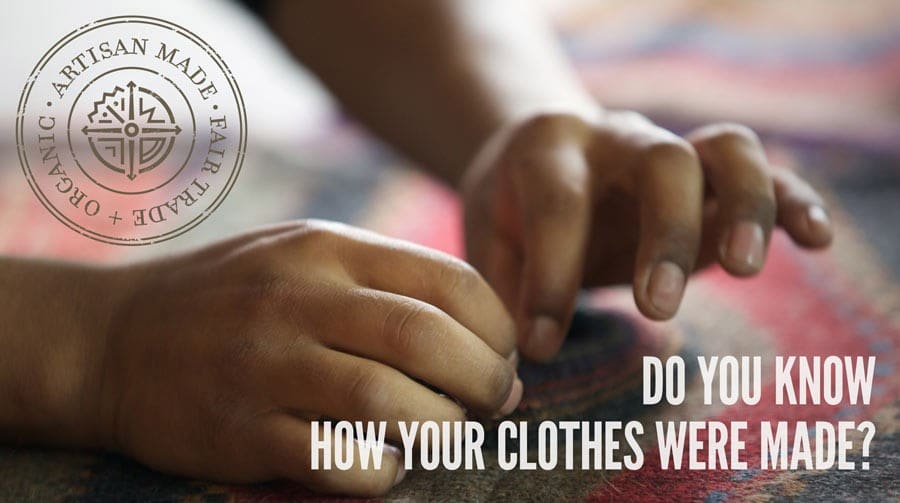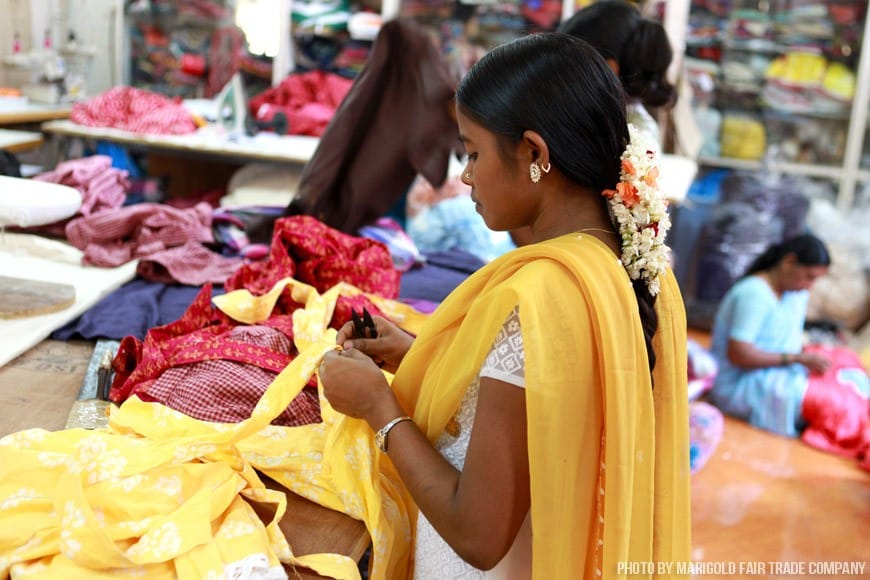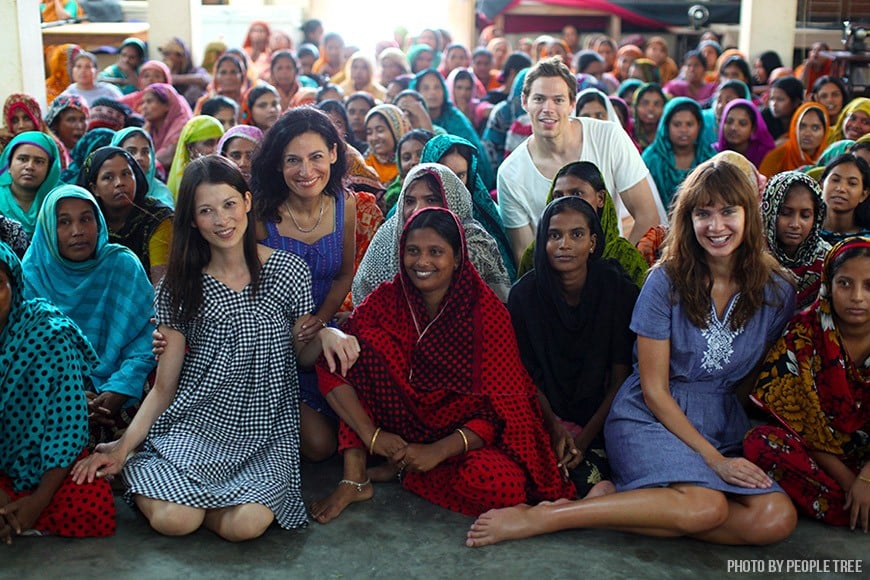Are your purchases supporting Fair Trade?
Check the label on your favorite piece of clothing. Chances are, you are wearing an imported garment that was manufactured without the use of fair trade standards. What’s more, supporting the fair trade movement is as easy as selecting items that bare the Fair Trade Certified label.
According to the US Census Bureau, the United States has imported more than $69 million worth of imports from China to date in 2014 with the numbers destined to increase as the year unfolds. China is especially infamous for the use of sweatshops in the majority of their factories. Large companies like Nike and Gap are known to use these factories as a means for faster production and cheaper labor. While it is true that jobs are created and income is ultimately earned, the working conditions in many countries do not meet American standards for safety and fairness.
According to the War on Want Organization, about 36% of the Chinese population lives on less than $2 a day. They are subject to poor working conditions, denial of workers’ rights and many health risks.
Journalists and investigators are constantly reporting on these conditions. In 2013, Apple compensated workers with the ability to attend college for free after they discovered an increase in suicides due to poor conditions in Chinese factories. Many cases like this have been made, and as a result, awareness and prevention have improved. The consumer has the power to change what stores sell, and companies like Green America and Fair Trade USA are working to increase knowledge of such events and issues.
Fair Trade & Employee Rights
Fair Trade USA works as a non-profit, third party certifier, enabling consumers to make a difference in other people’s lives. The company advocates “fair prices” for farmers globally, elimination of exploitation on labor, safety for workers and resources for “healthy and sustainable lives.” Workers across the globe are compensated justly thanks to the organization. Fair Trade USA funds are used for development projects in other countries to promote social, economic, and environmental change. These projects enable farmers to use safer and more sustainable practices in agriculture, empower women with better rights and more freedom, support educational programs in order to build more schools, eliminate poverty with “market-based tools” for farmers, and provide better health care for workers and their families.
Contrary to other organizations, Fair Trade USA does not dictate how the money is used in these underserved areas. There is an established democratic system whereby the communities decide on how to distribute the funds. This ensures the livelihood of farmers and workers.
The Power of the Purchase
Every time we buy a product with a Fair Trade Certified label, we help others achieve a more sustainable future. Working as a middleman that oversees the shipment of funds, Fair Trade USA partners with conscious companies like the Republic of Tea and Peet’s Coffee and Tea to promote their message. The distinction between the company, Fair Trade USA, and the movement is in the label. Fair Trade USA works to label products, while the fair trade movement actively promotes sustainability and raises awareness.
The President of Fair Trade USA, Paul Rice, explains further on how the movement operates globally.
Check out the 2012 Fair Trade Almanac to see how the organization has impacted different global populations:
Different Ways to Buy in the USA
With so many different companies, stores and food products, it is often difficult to determine which products support fair trade. Here are a few simple guidelines:
- Visit Fair Trade USA. You can make online purchases with the organization and feel perfectly safe and secure that your purchase is going towards a good place.
- Check the label. Does it say, “Made in the USA?” Does it have a union label? Look at labels the next time you go to the mall. American Apparel clothes advertise “sweatshop-free” on all their products. On food products, look to see if it is bearing the Fair Trade Certified label. You can also get the Fair Trade Finder on your phone, and yes, it is available on both the iPhone and Androids.
- Recycle. Go to the local thrift shop. Recycling and reusing clothing is a good way to sustain the environment and a good way of avoiding sweatshops. It may have been originally made in a sweatshop, but at least it can be used again.
- Ask. Do not be afraid to ask store workers questions about the products they sell. It’s part of their job. Be thorough in your research.
- Educate others. Spread the word. Be an advocate for Fair Trade. The more people that know about the situation, the more likely sales will decrease for sweatshop-using companies. It may seem small, but knowledge is power. The more people that know, the larger the impact will be.
Applying fair trade practices globally is an easy way to change the world for the better. By making conscious purchases, sweatshop labor can be eliminated and ethical and sustainable production can be achieved. The power is in your wallet, and nothing speaks louder than voting with your dollars.



